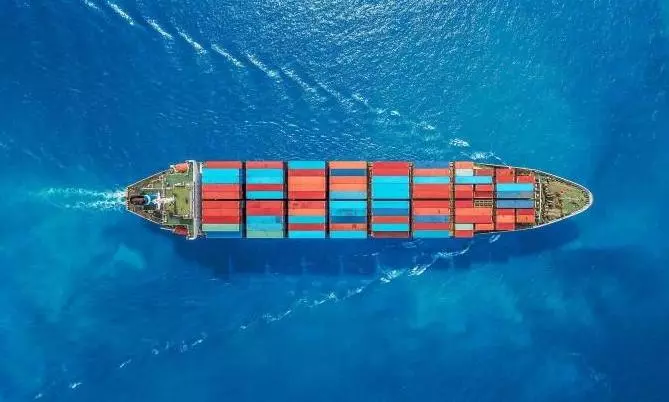How will carriers manage the decline?
Capacity management will be key to deciding how much of super-cycle gains carriers can hold on to: Drewry

By over-ordering in the boom years, carriers have set themselves an enormous challenge to shuffle and make capacity magically disappear, says Drewry in its latest Container Forecast report. "If they succeed next year, they will need to rinse and repeat for 2024."
The carrier industry is now entering a period of managed decline, and capacity management will be the key to deciding how much of the super-cycle gains the carriers hold on to, says Drewry. "Carriers didn't really have to do too much to fall into the profit bonanza of the past two years. The upsurge in demand, combined with chronic supply chain congestion, guaranteed their windfalls - since 2Q20 the industry-wide EBIT profit is running at over $400 billion through 2Q22."
Now that the market is in a tailspin with high-inflation sapping consumers' spending power and spot rates in a seven-month funk, liner bosses are going to have to work much harder to keep the profits flowing, says the report.
Drewry asks the question: "Do carriers have the tools to mitigate the upcoming supply and demand shocks?"
Carriers face an enormous challenge taming the one thing they have control over – supply. "The problem is there is a lot of it, and they are being attacked on multiple fronts. Firstly, there is the latent capacity that has been "lost" due to supply chain/port congestion that is returning to the market as the bottlenecks ease, a process that might well be expedited by an ailing demand curve. As congestion fades, capacity will increase inversely, and for 2023 we see bottlenecks on their own only stripping around 7 percent of effective capacity from the market."
"Blank voyages/sailings are a kind of a precision tool that carriers can use whenever they fear a short-term imbalance," says Simon Heaney, Senior Manager, Container Research, Drewry. "You can't really predict these to any degree of accuracy beyond a couple of months but generally speaking we expect them to be used liberally for the foreseeable future. Any whiff they are being used to inflate rates and stimy trade will rile beneficial cargo owners (BCOs) into more lobbying but there isn't really much else cargo owners can do."
Ship owners (independent and operators) have spent a lot of their profits on new container ships, says Drewry. "Some 2.6 million TEU of newbuild capacity is expected to arrive next year before any adjustment for delays to delivery (slippage) or cancellations. Drewry has lowered its demand outlook for 2022 to 1.5%, and to 1.9% for 2023 on the back of heavily downgraded GDP predictions. It is the speed with which the market has turned that has led us to believe that carriers will fight back with more proactive capacity adjustments than previously envisioned."
To maintain profitable business, carriers will look to offload older, more polluting ships from the market as quickly as they can. "Our base forecast includes provision for a near-record level of demolitions in 2023. This capacity reducing lever will be pulled along with others, namely pushing back deliveries of newbuilds and greater idling, effectively calling on shipbuilders and independent owners to share some of the supply burden.
"Assuming carriers do exactly as we expect, those combined actions will still be insufficient to fully bridge the supply-demand gap next year with an estimated net increase in effective capacity of 11.3 percent, way above the projected demand growth of 1.9 percent. Adding in missed sailings will, however, get them closer and should be enough to keep freight rates and profits above 2019 levels."
Heaney adds: "We know that many shippers are demanding to renegotiate existing contracts and clearly the balance of power has shifted for next year. Hence, we think average freight rates are due for a fairly large correction."
Vertical integration is going to be a big focus for carriers. Air is another focus area. So, how does Drewry think large carriers are looking at the supply chain? "This has been in play for a few years now," says Heaney. "Lines want more of the supply chain revenue pie for themselves. Even a committed pure-container line like Hapag-Lloyd appears to be making a bit of a strategic shift with a relatively small logistics acquisition. Ultimately, the majors are committed to this approach. There is no going back for the likes of Maersk, MSC or CMA CGM."
Outlook beyond 2024? Will carriers see pre-pandemic freight rates or lower than that? "We only forecast freight rates and profits one year out so have not yet made a forecast for 2024 but generally we don't expect rates to fall below where they were in 2019 in the short- to medium-term. Lines will have higher cost bases relating to ESG and in some cases a hangover in expensive time charter deals signed at the peak of the market for long durations. In our view, this will create a higher floor for rates than pre-pandemic."

Jyothi Shankaran
Associate Editor, STAT Media Group. He has worked with IndiaSpend, Bloomberg TV, Business Standard and Indian Express Group. Jyothi can be reached at jyothi@statmediagroup.com


